You are here
History of Dushanbe.
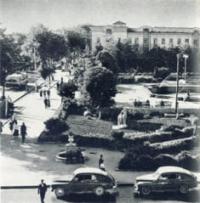

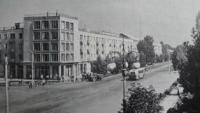

Central Asia Tours and Travel.
“The state is being destroyed from within, and external forces only complete its defeat…”
Chinese sages.
Excursion tours in Dushanbe.
The first mention of Dushanbe dates back to the beginning of the XVIIIth century, and as an administrative center - the estate of the Gissar bek - it became known in the XIXth century. Favorable natural conditions and geographical location contributed to the formation of Dushanbe as an administrative and political center.
Dushanbe arose on the site of a small settlement at a crossroads, in which a large bazaar was organized on Mondays, hence the name of the city (“Dushanbe” in Tajik - Monday). Archaeological sources confirm that Dushanbe has an ancient history, which tells about the high culture of agriculture and the management of the population.
But only at the beginning of the XXth century Dushanbe began to play a certain role in the political and economic life of the Tajik people. On the territory of the city, archaeologists discovered items made more than 3 thousand years ago. In the area of Putovsky Spusk, the remains of settlements of the Greco-Bactrian kingdom (end of the IIIrd century BC) were found, and the settlement of the Kushan period (VIIth - VIIIth centuries) was found on the left bank of the Dushanbinka River.
The city of the Kushan time, according to scientists, was of considerable size. Traces of its rural area were found during excavations of the following early medieval settlements: Arki Mir (territory of the botanical garden), Ispechaktepa (district of Ispechak residential area), Teppai Iskandar, Shishi Khona settlement.
The first mention of Dushanbe dates back to 1676, at that time the only attraction of the city was the weekly market held on Mondays, hence the name of the city, which is translated into Russian as "Monday" ("du" - two, "shanbe" - Saturday, i.e. two days after Saturday).
In its centuries-old history, once enlightened, with a high degree of culture and various knowledge, the Tajik people endured the crushing blows of bygone eras on their shoulders. Not having time to recover from the consequences of the Arab invasion of the VIIth - VIIIth centuries, the Tajik people in the XIIIth century fell under the cruel yoke of the Mongol conquerors, led by Genghis Khan and his heirs.
In the XVth - XVIth centuries, the Tajik people found themselves under the rule of new conquerors - the dynasty of the formidable Tamerlane, and then - another leader of the Turkic-Mongolian nomadic tribes, Sultan Sheibani.
The famous German historian Gerhard Ritter wrote: “Tajiks are much more developed, smart, educated and prone to the arts than their wild ignoramuses overlords. They present a sad picture of any scattered people, given to the mercy of the stormy influx of foreign populations, who seeks salvation on the rocks, islands and seashores, and there, in powerlessness and humiliation, lives on what they managed to save from a once much better past.
The situation of the Tajik people in the Bukhara Emirate was monstrously difficult. Here is what the researcher of Central Asia D.N. Logothete in his book “The Land of Lawlessness. The Khanate of Bukhara and its current state” (1912).
“Having accidentally looked into the inner life of this unfortunate country and its disenfranchised population, one can see a picture of the soul of the revolting Bukhara order, clearly showing that Bukhara has not taken a single step on the path of progress.
It is impossible not to remember that this corner of the vast Asian continent is currently perhaps the most disenfranchised on the entire globe. (Quoted from the book by B. Gafurov, N. Prokhorov “The Fall of the Emirate of Bukhara”. Stalinabad: State Publishing House of Tajikistan, 1940)
“The Bukhara Khanate was “famous” throughout the world for the number of taxes levied on the population. In Bukhara, literally everything that could be taxed was taxed. If a child was born in the family, it was necessary to pay, the daughter got married - too.
Dehkans bought a goat or a ram - they could not do without a tax even here. Only one air in Bukhara was not taxed. (Quoted from the book by B. Gafurov, N. Prokhorov “The Fall of the Emirate of Bukhara”. Stalinabad: State Publishing House of Tajikistan, 1940)
The situation of the Tajik people changed radically after the establishment of Soviet power in Turkestan and the overthrow of the Bukhara Emirate by the Red Army in September 1920. Emir Seyid Alim Khan after the fall of Bukhara hurriedly went to the Gissar region.
Here, in the village of Dushambe, the emir deploys his residence. Immediately after his arrival, he gathers his vassals from everywhere and distributes positions to them. Among those who arrived to bow to the emir was the son of a Koktash official, Ibrahim-Galyu, which is translated into Russian as Ibrahim-thief, later he became known as Ibrahim-bek.
“Naturally, the leaders of the mostly nomadic Basmachi gangs, formed mainly from the Turkic-speaking tribes of Eastern Bukhara, did not want to fight for the creation of an independent Tajik Republic, in the interests of the Tajik people.
Many of these leaders, including Ibrahim-bek, did not even know the Tajik language.” (Quoted from the book by R. Masov "Tajiks: the history of a national tragedy." Dushanbe: "Irfon", 2008) In order to strengthen his financial base, the emir, on the initiative of his finance minister Imam-Kul, robbed 80 households of Bukharan Jews living in Dyushamba.
Gold coins of tsarist Russia and all women's jewelry were requisitioned from them. Well, their owners themselves, so as not to be very indignant, were sent to the Dushambi zindan. The houses of the robbed Jews were granted to Bukhara officials and beys who accompanied the Emir.
On the main square of Dyushambe (the former square named after Ch. Putovsky), 26 inhabitants of the village of Dyushambe, who openly sympathized with the Soviet regime, were executed. Seid Alim Khan declares the village of Dyushambe the temporary capital of the Emirate of Bukhara, being in full confidence that the red units will not go to this remote region of Eastern Bukhara.
It should be recognized that thanks to the decision of the emir, the previously unknown village of Dyushambe becomes known to the world as the temporary capital of the emirate. In Dyushamba, dozens of White Guard, Turkish officers and British military advisers arrive to help the emir to instruct the Bukhara army.
The emir calls for help, sending his representatives to neighboring countries. Seyid Alim Khan turned to England with a request to increase assistance, expressing consent to the inclusion of Bukhara in the British possessions.
The British Consul General in Kashgar, Lieutenant Colonel P. Esserton, wrote about this: “The Emir sent a mission to Kashgar led by one of the ministers who fled with him. The mission delivered letters to the King-Emperor, the Viceroy of India and myself. In them, the emir spoke about the overthrow of him by the Bolsheviks and about his flight and asked to include his state in the British Empire, which he gave unconditionally at our disposal.
(Quoted from A.Kh. Babakhodzhaev’s book “The failure of British policy in Central Asia and the Middle East during the period of recognition of the Soviet state (1918 - 1924)”, Moscow: East Literature Publishing House, 1962, p. 84.)
But the news of the successful offensive of the Red Army in the direction of Dyushambe interrupted the state activity of the emir. He hastily crosses the Afghan border. On February 19, Gissar and Karatag were liberated, and on February 21, units of the Red Army approached Dyushamba.
The defense on the high left bank of the Dyushambe-Darya was led by emir military men, many of whom graduated from military schools of the Russian Empire. Active fire support was provided by Afghan volunteers from the personal guard of the emir and illegal armed formations (basmachi), led by Kurshermat and Ibrahim-bek and left by the emir of Bukhara to defend Dyushambe.
At 07:00 in the morning, after ten minutes of artillery preparation and heavy fire from two machine-gun squadrons, units of the 1st Cavalry Brigade under the command of Yakov Melkumov and the Gissar expeditionary detachment under the command of Vladimir Ionov crossed Dyushambe-darya and entered Dyushambe with deployed red banners.
Over Eastern Bukhara was engaged in the scarlet dawn of a new life. In the autumn of 1924, the small village of Dushanbe became a city when the Tajik Autonomous Soviet Socialist Republic was formed, and since 1929, after the formation of the Tajik Soviet Socialist Republic, it became the capital.
Until 1929, the city was officially called in Russian Dyushambe, in the period from 1929 to 1961 it was named Stalinabad in honor of Joseph Stalin. Before the revolution, there were three small villages on the site of the current capital of Tajikistan: Sary Assia, Shahmansur and Dushanbe (“Dushanbe” in Tajik means “Monday”, it was on this day that the market day was in the village).
But if the name of the city is quite new, then its historical past goes back almost 3 thousand years. Archaeologists have unearthed here the remains of the settlements of the Greco-Bactrian kingdom, the settlement of the Kushan period (VII-VIII centuries), the settlement of Shishi Khon and other medieval settlements.
At the beginning of the 20th century, the summer residence of the Hissar beks was located in Dushanbe. At the end of 1921, Dushanbe was taken by the Basmachi troops led by Envar Pasha, but on July 14, 1922, it passed into the hands of the Bolsheviks and was proclaimed the capital of the Tajik Autonomous Socialist Soviet Republic, which in 1929 was transformed into the Tajik SSR.
However, at that time, the city as such did not yet exist. There was a small village of 4 houses with wooden floors, 42 wagons and 283 inhabitants. During the years of Soviet power, Dushanbe turned from a village with adobe shacks into a beautiful garden city with more than a million inhabitants; a small mountain village has grown into a green, modern, industrial city.
In 1929, the first railway was built in Dushanbe, connecting the city with Tashkent in Uzbekistan and the capital of the USSR, Moscow. This gave impetus to the development of the textile, electrical and food industries, as well as mechanical engineering in the city.
For 76 years, the village, lost among the mountains, has turned into a modern industrial city. From 1929 to 1990, Dushanbe was the capital of the Tajik Soviet Socialist Republic, and since 1991 - the center of political, economic and cultural life of the sovereign state - the Republic of Tajikistan.
From 1929 to 1990, Dushanbe was the capital of the Tajik SSR, and in 1991 became the capital of independent Tajikistan. In 2004, by decision of UNESCO, the city of Dushanbe was declared a city of peace.
Geographical coordinates of city of Dushanbe: N38°34'42.15" E68°46'29.26"
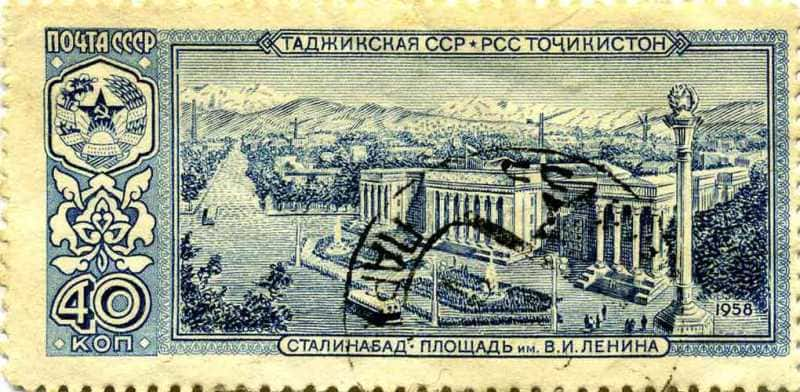
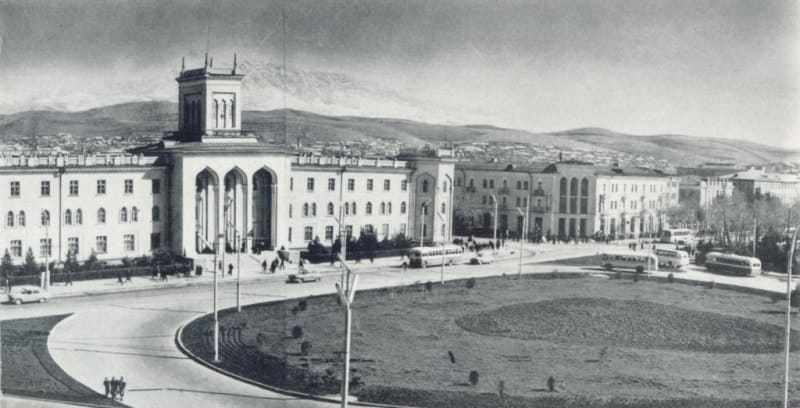
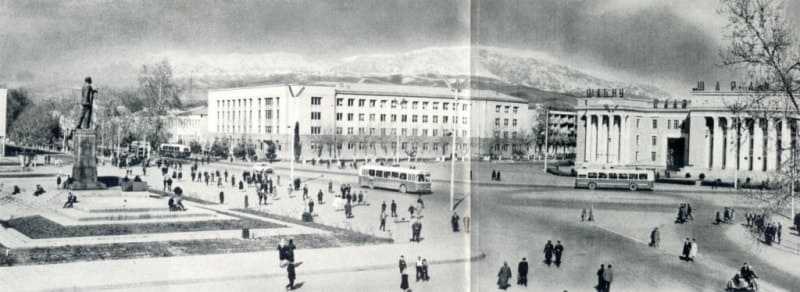
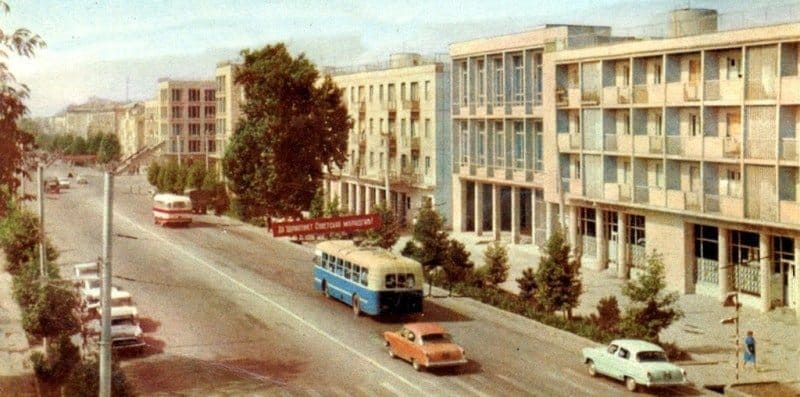
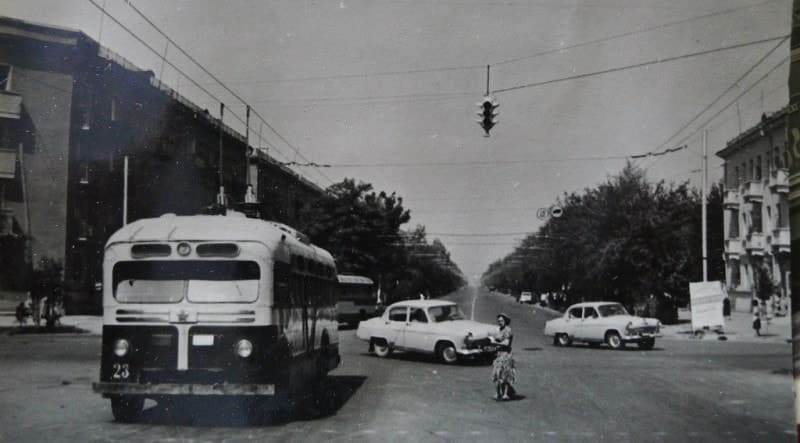
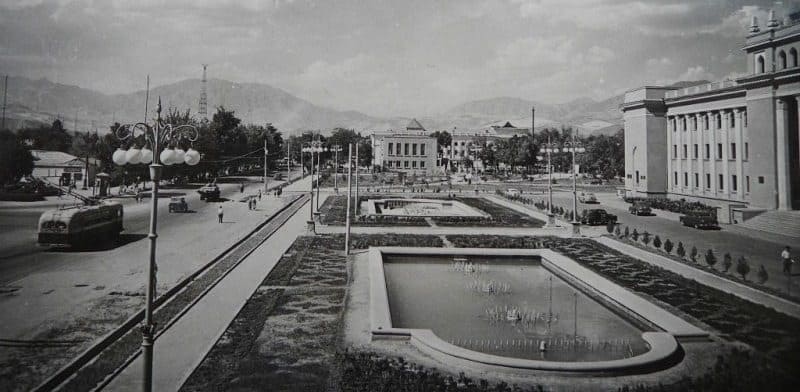
Authority:
Books: Gafurov. B.G. "Tajik ancient, ancient and medieval history". M., 1972. Dyakonov M.M. "Works of the Kafirnigan Detachment". "Antiquities of Tajikistan" Exhibition catalog, Dushanbe, 1985. Bolshakov O.G., Negmatov N.N. "Excavations in the suburbs of Penjikent". Proceedings of the Tajik archaeological expedition. MIA. Issue. 3 M. 1966.
Bernshtam A.N. "Historical and archaeological essays of the Central Tien Shan and Pamir-Alay".
"Religious and Spiritual Monuments of Central Asia". Author M. Khashimov. Publishing house "Saga", 2001.
Photos by
from the state archive of the city of Dushanbe and the guidebook "Journey through the USSR". Publishing house "Planet", 1989







